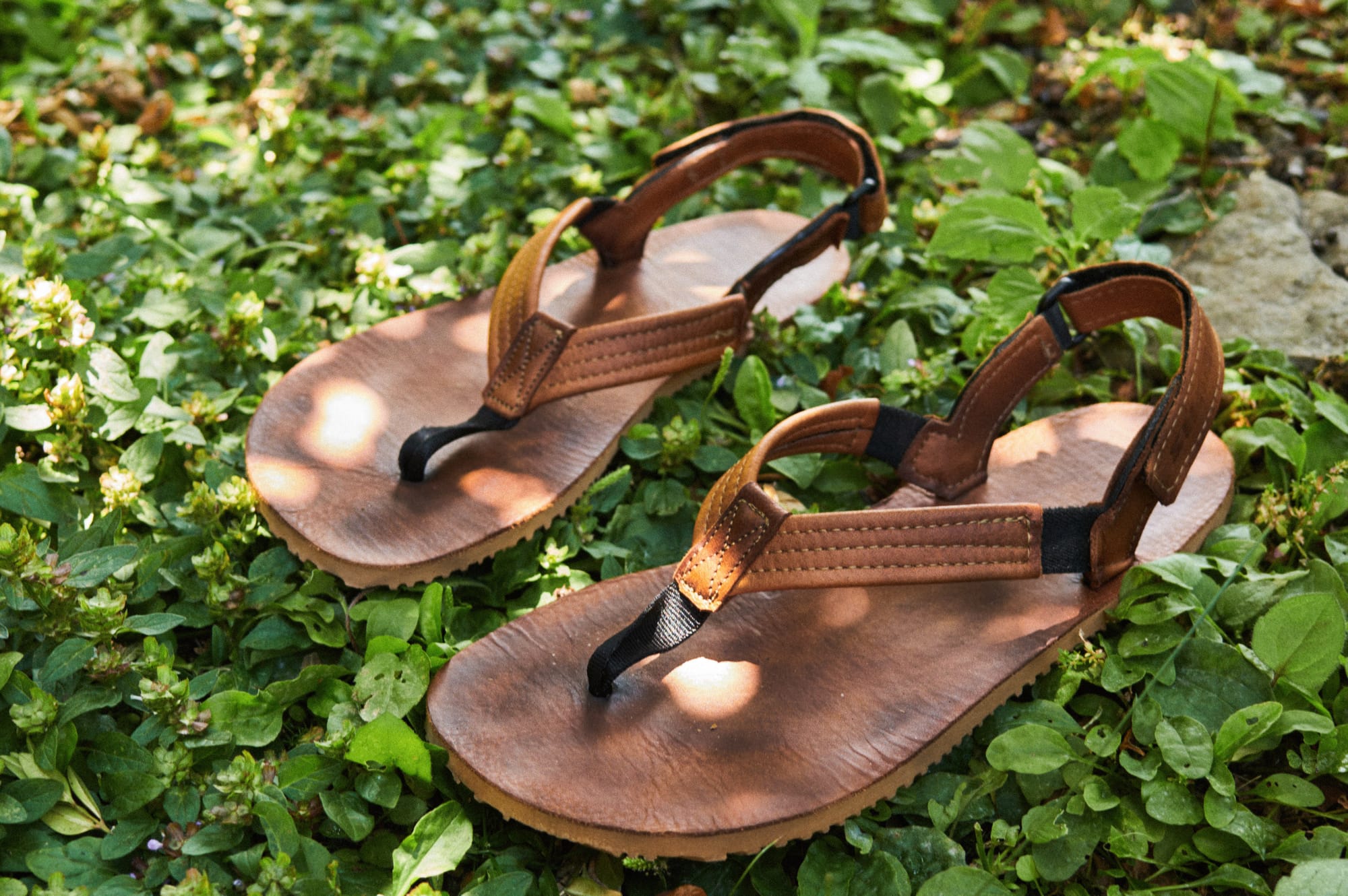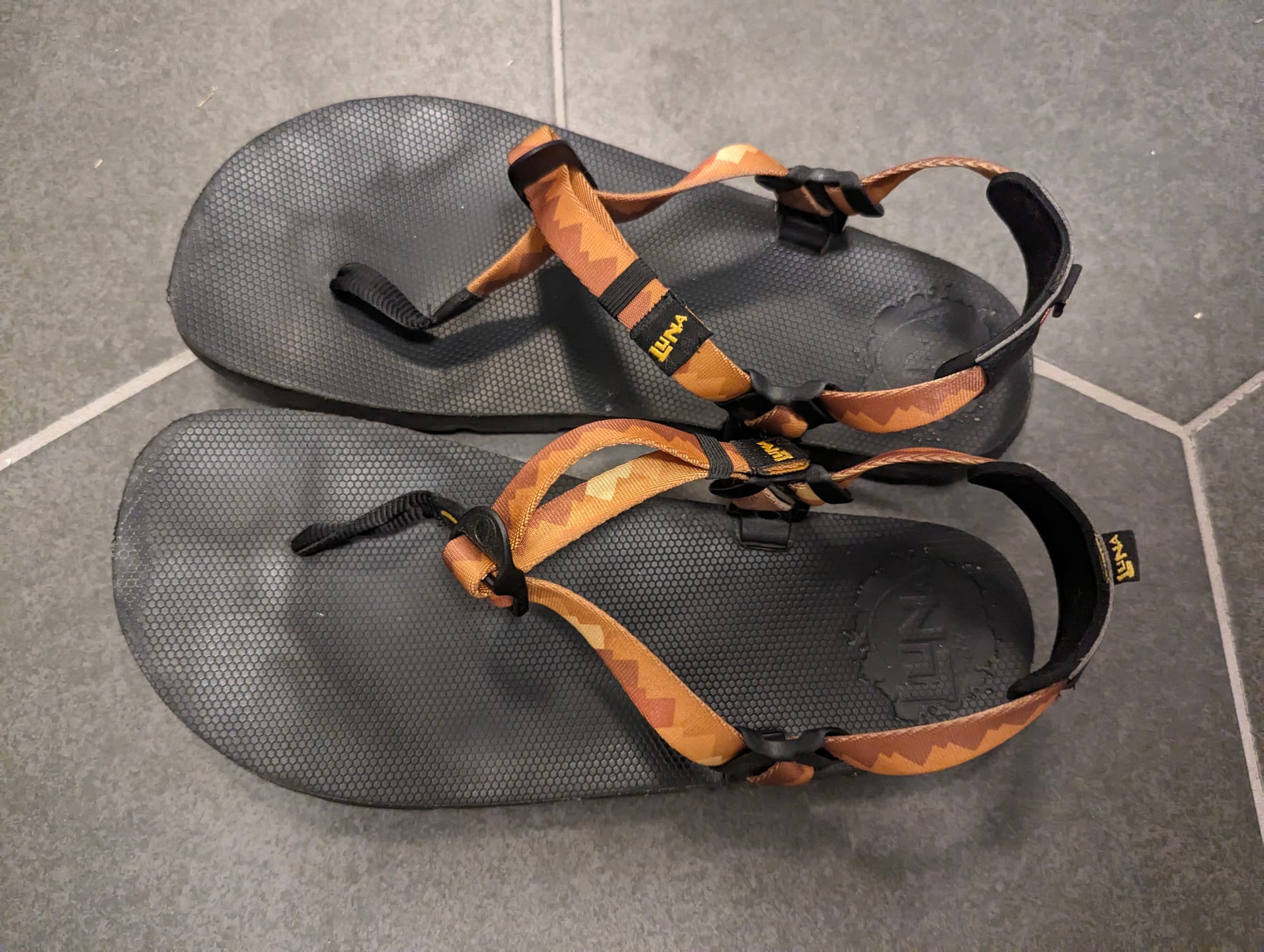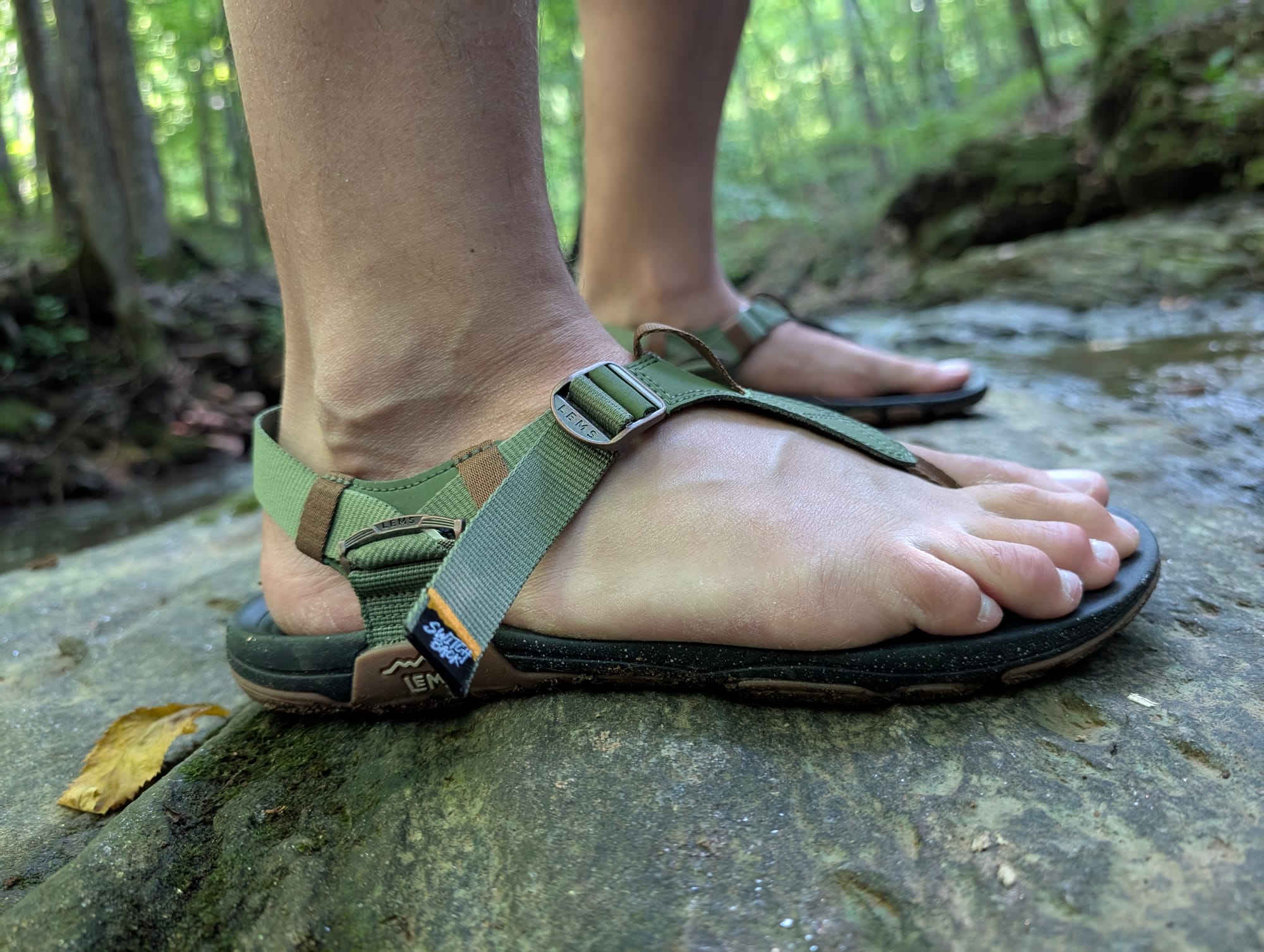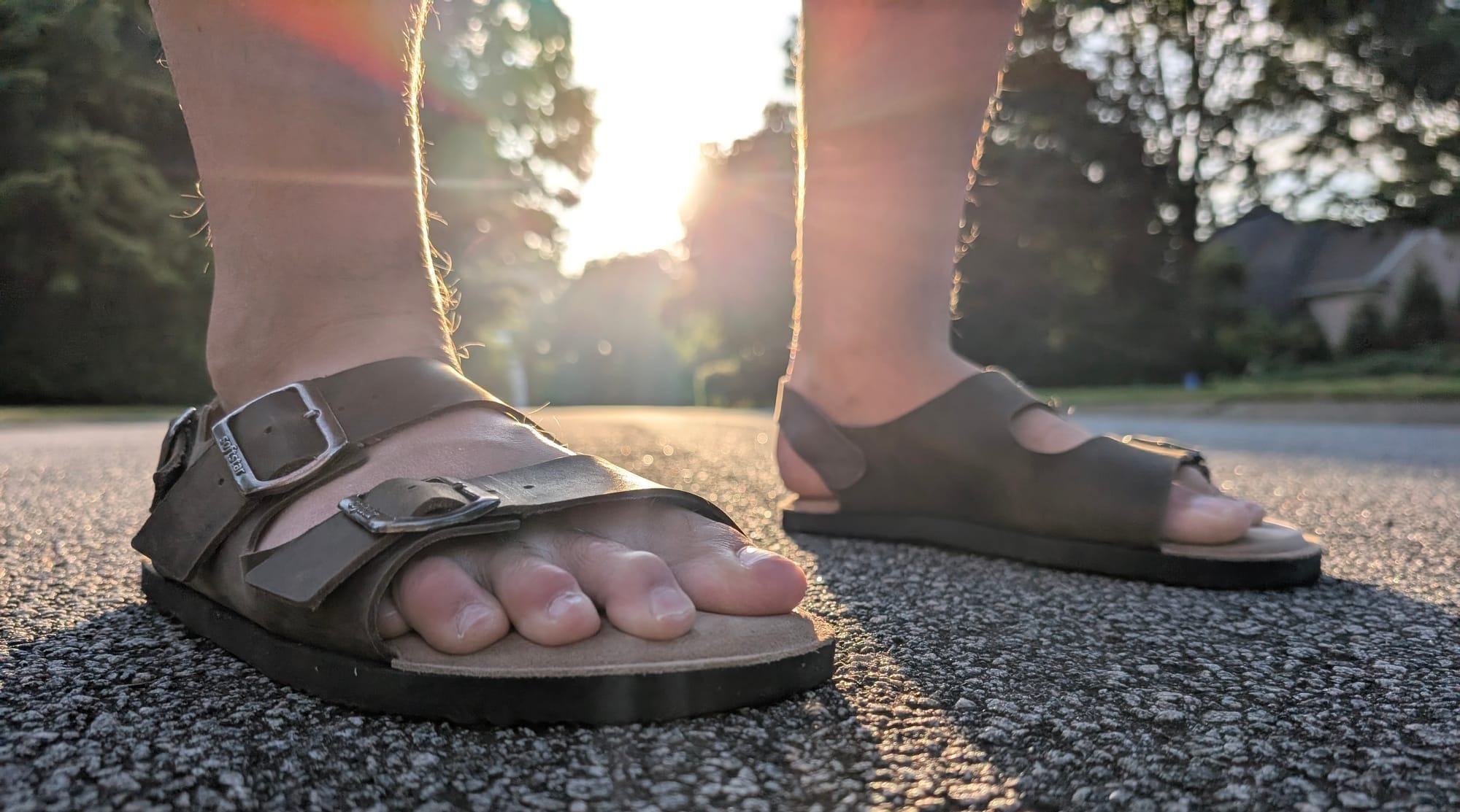An Introduction to ChiRunning®A Natural Running Form
An introduction to ChiRunning, a natural running method that be used in conjunction with minimalist or barefoot running, written by Certified ChiRunning instructor David Stretanski.
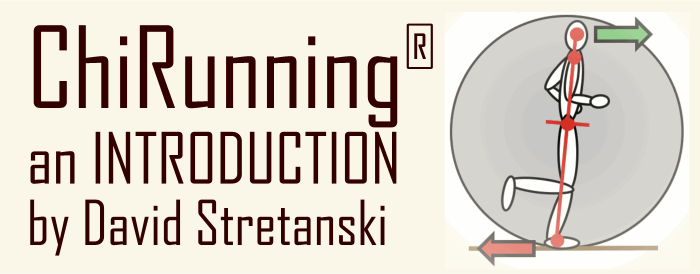
Guest post by David Stretanski of EnerChi Fitness
In the fall of 2005, I was injured, frustrated and confused. Nagging injuries had affected my running program for over two years and I was running with the fear of my next setback. Then a fellow runner suggested I get this book called "ChiRunning". With the help of a few ChiRunning principles, I have been running injury free ever since while enjoying greater distance and speed with limited recovery. ChiRunning has also allowed a steady migration to less and less shoe over time as I improve technique.
ChiRunning ("chee-running") is incredibly simple. It applies some basic principles for a dramatic increase in efficiency while reducing discomfort, aches/pains and injury.
The ChiRunning principles might be summarized in two key ideas:
- Ask big strong parts of the body to do relatively small jobs; and limit asking a small part of the body to do a big job.
- Cooperate with forces of nature; and even use them to our advantage whenever possible.
The result is postural alignment and motion that is based on the body's design, simple principles of nature, and the laws of physics. But is ChiRunning the only 'right' way to run? Certainly not, at least not in my opinion. So many want to dissect running down to absolute right and wrong. How each of us decides to run on any given moment depends on the person, the objective and the tolerance for risk.
Here is a short video entitled "ChiRunning Simplified! Efficient and Injury Fr-e-e Natural Running Technique" that summarizes the technique and provides an analogy to put the potential difference ChiRunning provides into perspective:
[embed]https://youtube.com/watch?v=H26liWMDH8U[/embed]
ChiRunning Form Summary

- Postural Alignment with your shoulders over your hips over your ankles with a neutral head position. A level pelvis, using the lower abdominal muscle, stabilizes both your pelvis and your posture line.
- Relaxed Midfoot (Fullfoot) Landing under your posture line.
- Subtle Forward Lean from the ankles to engage the pull of gravity. Only a small angle of lean is necessary, much less than you might think.
- Knee Bend to allow the heel to float up behind you. Note the knee stays relatively low as it bends. With this motion, the heel will make a circle as you move forward. The circle or wheel is behind you and not under you.
- Arm Swing to the rear. This helps maintain your balance as you lean forward.
These are only the initial basic ChiRunning elements. There is more to each of these basic elements; and there are also a number of additional elements such as cadence, extending stride length to the rear, and hill technique adjustments to name just a few.
Foot Landing in ChiRunning, Additional Discussion
An important running technique element is the foot landing. It is the source of much discussion and debate. ChiRunning suggests you land and bear weight using the midfoot for the majority of your running. The midfoot could be described as 'fullfoot' since the interaction with the ground is balanced across the whole foot. This approach has a number of potential benefits:
- Reduction of muscular effort in the lower legs and feet. This refers back to the first key idea above: limit high effort in relatively small parts of the body. In this case, the very strong structure of the lower leg and foot is primarily used for momentary support.
- Reduction of tension in the feet. This can reduce repetitive stress/impact since the feet can be 'soft' when interacting with the (hard) ground.
- Reduction of tension in the lower legs and ankles. This also refers back to the second key idea above: cooperate with the forces of nature. In this case, cooperating with the forward pull of gravity is more efficient when limiting any resistance to your forward fall. In my experience, any tension in the ankle 'hinge' or bearing weight on the forefoot impedes my forward fall.
But are there times for other foot landings? Sure, short intervals of outright speed or terrain challenges might adjust the foot landing. The statistics suggest that most running injuries occur at the knee and below. ChiRunning suggests that in the highly repetitive motion of running, reducing effort/stress/impact on the lower legs and feet can have a significant effect on this statistic.
And what do ChiRunners generally wear on their feet? Anything from a traditional running shoe to no shoe. ChiRunning can help adjust running technique no matter what you choose to wear on your feet. Over time, ChiRunners generally sense needing less and less shoe. This was my experience. I started off in stiff motion control shoes. Then I moved to a neutral cushioning shoe; and now feel comfortable running very long distances in minimalist flats such as the NB 790 trail shoe. Periodically I will run short distances in bare feet and often have clients run barefoot as a teaching aid. The goal this spring is to experiment with Vibram Five Fingers to further enhance my running experiences.
Finally, let me be clear, the technique elements described here are not the only way to run. We each have to decide for ourselves what principles we are going to proactively apply to our fitness programs; perhaps while weighing the short-term and long-term objectives against the associated risks to our consistent mobility and enjoyment.
About David Stretanski

David Stretanski is a ChiRunning(r)/ChiWalking(r) Certified Instructor and runs EnerChi Fitness, a New Jersey Metro Area based company which provides resources, informational seminars, and instructional programs on these safe and effective approaches to fitness. David, is pictured on the right, and Danny Dreyer, the Author/Founder of ChiRunning, on the left.
See http://www.eChiFitness.com for information about online, published and instructional resources. If you are in the Northeast USA and would like to learn more about ChiRunning in-person, also check out David's schedule or contact him to arrange an event, program or lesson in your area.
Thank you, David, for taking the time to introduce ChiRunning to the Vibram Five Fingers fan community!
ChiRunning®/ChiWalking® are registered trademarks of ChiLiving, Inc.

